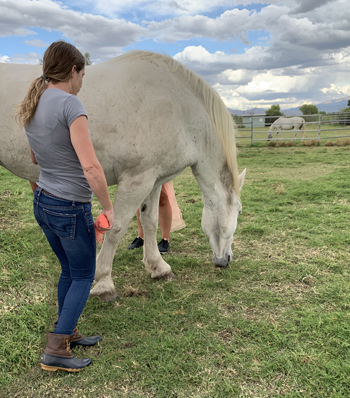Equine Therapy in the Treatment of Eating Disorders
Through equine-assisted therapy, clients learn that trust is a two-way street. Horses respond to energy and intention. Both horse and client develop a bond through mutual respect.
The dance of the horse starts from the initial greeting. Non-verbal communication, movement, and intention promotes connection. In Equine-Assisted Therapy, the horse becomes a cotherapist, providing instant feedback to humans and inviting us to be present and practice a beginner's mind.

Horses have many qualities that we experience as humans. As prey animals, horses are acutely aware of their environment and react quickly to perceived danger with flight, fight, and freeze responses. They respond honestly, directly and without judgment to human emotions and energy.
Through gentle grooming, leading and interaction with the horse — sometimes accompanied by meditation, yoga or art — clients practice empathy, assertive communication and emotional regulation. Building trust with the grace, power, and honesty of the horse can provide a bridge for healing that may be more effective than verbal communication for clients who struggle with "talk therapy".
Pat Parelli"A horse doesn't care how much you know until he knows how much you care. Put your hand on your horse and your heart in your hand."


